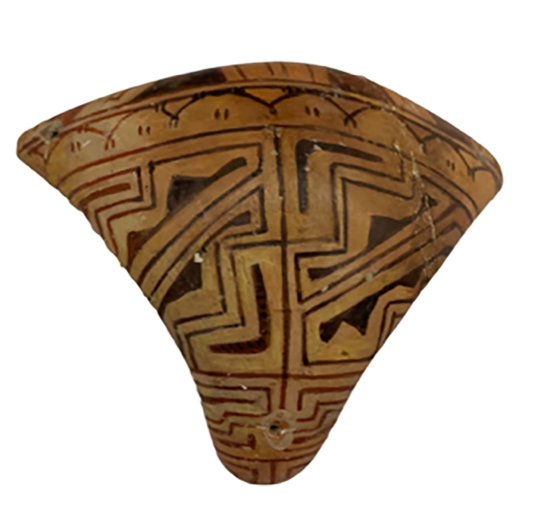

Tanga: plaster cast from the National Museum of Brazo; (MMA 42.1.1)
This plaster replica of a tanga,or woman’s pubic cover, was donated to the Maxwell Museum in 1942 by Heloisa Alberto Torres, Director of the National Museum of Brazil from 1937 to 1955. Alberto Torres is known for her archaeological research on ceramics from the island of Marajó at the mouth of the Amazon River. Between AD 400 and 1350 the island was inhabited by farming and fishing communities who built their homes on natural and constructed mounds and created distinctive decorated ceramic
Tangas are unique to Marajó. These highly decorated triangular ceramic objects were worn as pubic coverings by women and girls. Small holes at the upper corners allowed the tanga to be suspended by string from the wearer’s waist. Tangas have been recovered in both burial and settlement contexts. Scholars debate whether they were objects of daily wear or, more likely, restricted to ceremonial occasions. Many of the elaborate painted motifs on tangas resemble those found on burial ceramics, suggesting that tangas too had special meaning to the women who made and wore them.
This high-quality reproduction was likely made from an original recovered during Alberto Torres’ groundbreaking 1930 fieldwork. It survives. If the original remained in the collections of the National Museum of Brazil, it was almost certainly destroyed in the 2018 fire that destroyed the Museum.